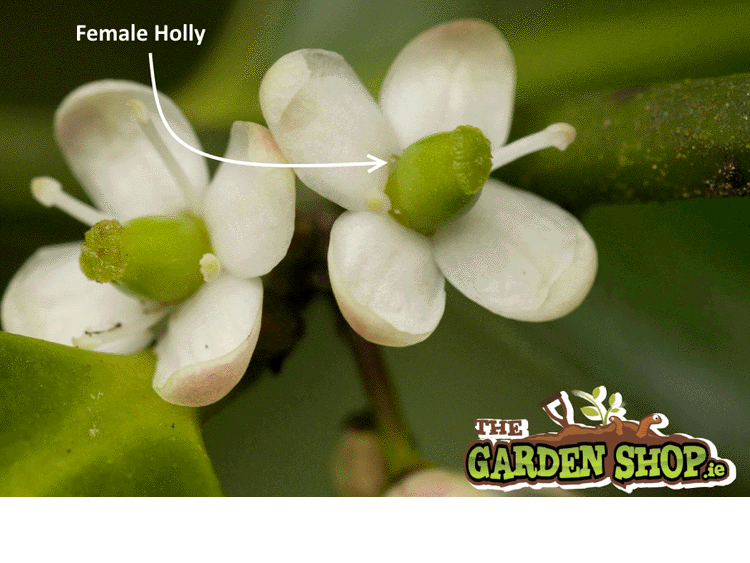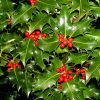Male & Female Holly
The common English Holly (ilex aquifolium) has been a favourite on these shores for centuries. In pre-Christian times the holly was revered for it's evergreen qualities & it's ability to live though the dead of Winter. The holly then became a symbol of Christianity itself when Jesus was crowned in thorns with the plants spiky leaves & red berries symbolising blood. Today this native holly can be found in hedgerows & woodlands across the country and it's red berries are a reliable source of Winter food for our native birds.

While this plant looks great all year round with it's glossy, deep green leaves, it is it's berries that really bring this plant to life. A little known fact is that hollies require both male & female plants to produce their berries.
While most plants have both the male & female reproductive parts on the one plant (and in the one flower), holly differs in that each plant is either male or female. This is known as a dioecious plant. Other dioecious plants include willow, hemp, gingko biloba & yew.
It is the female plant that bears the berries, while a male plant is required to pollinate the female plant. So, when buying holly you should purchase mostly female plants and the odd male. But this is easier said than done as it can be very difficult to distinguish between the two plants and it requires paying close attention to the plant’s flowers.
Female holly
As stated above, it is the female plants that produce the berries. So if you see a holly in berry, this is a female plant. But you can also determine the sex when they are not in fruit. When the plants are in flower look at the centre of the flower. The female holly will have a green, oval shaped centre. This will eventually develop into the berry if fertilised.
Male Holly
Males do not produce a berry, but are required to pollinate the female holly. You can also determine the male holly by looking at the flower. The male flower will have stamen, or long slender tubes which produce pollen positioned in the centre of the flower.






